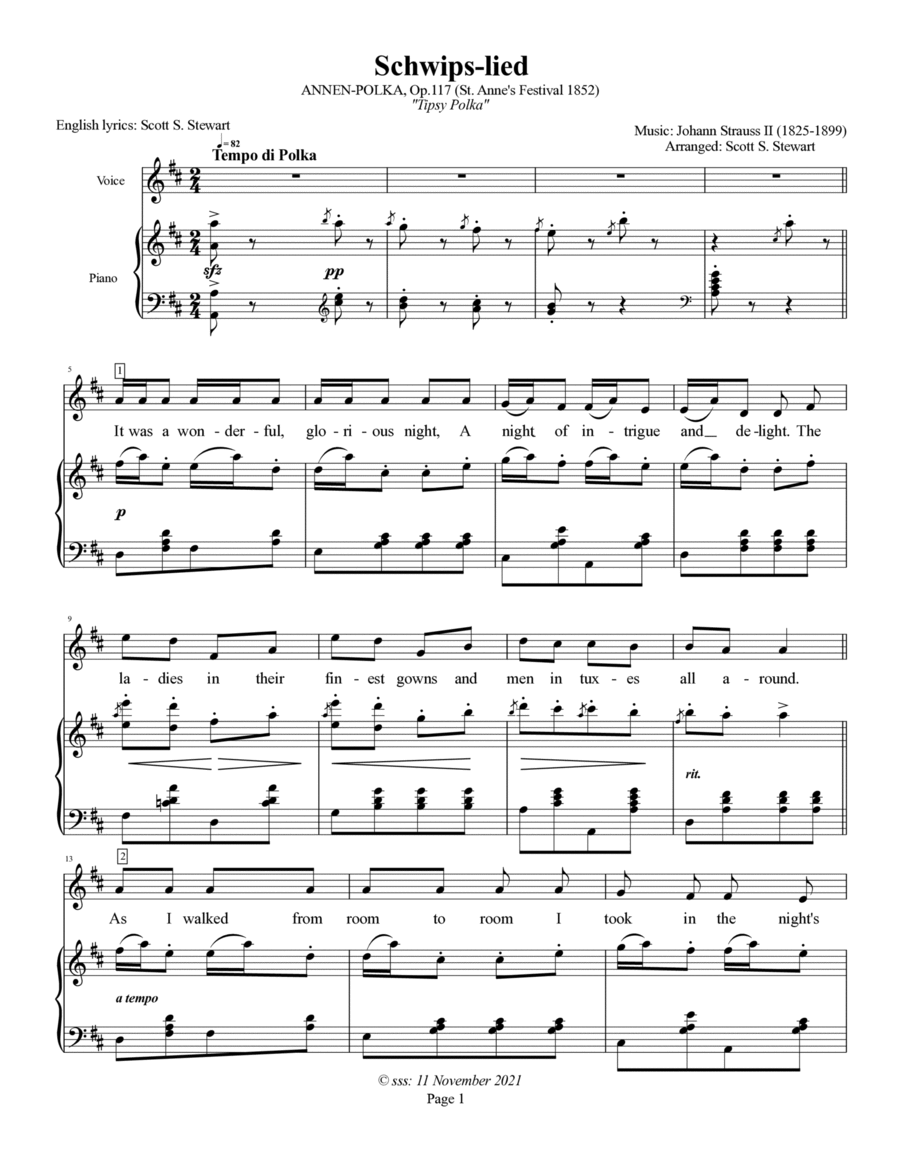Soprano voice,Vocal Solo - Level 4 - Digital Download SKU: A0.955877 Composed by Johann Strauss Jr. Arranged by Scott S. Stewart. Broadway,Musical/Show,Opera,Romantic Period. 7 pages. Scott S. Stewart #6622319. Published by Scott S. Stewart (A0.955877). The Schwips-Lied ('Tipsy Song') is actually the 'Annen-Polka' (an orchestral polka originally composed by Johann Strauss, ‘Sohn,’ in 1852) with a vocal part added above, inserted in his 1883 operetta, Eine Nacht in Venedig (One Night in Venice). It is sung by a proper Victorian-era woman who finds herself slightly drunk. This arrangement of The Schwips-lied is a masterful, humorous, musical tour de force. The new English text has been updated and expanded to give more depth of character (the girl who wants to be naughty, but still be nice looking for a long drawn out kiss), complete with an extended cadenza. This new arrangement is scored for soprano with piano accompaniment. Performance time: 2:30+
